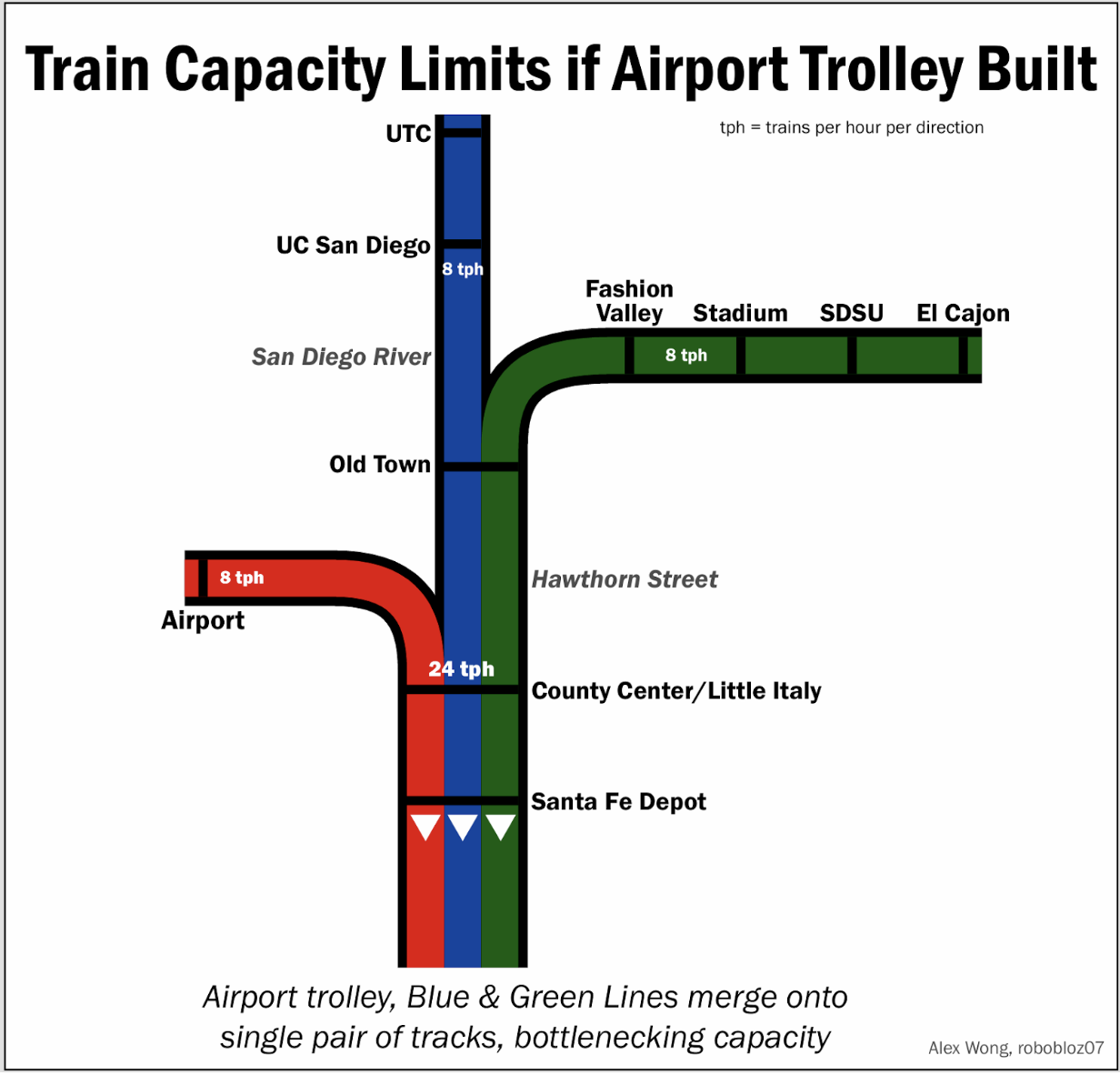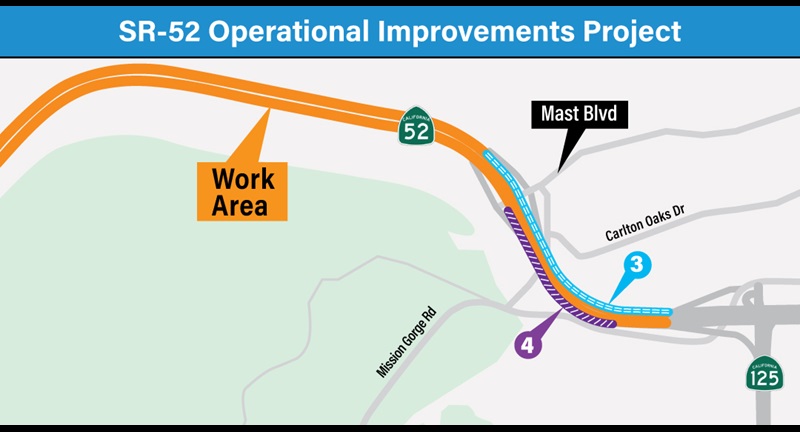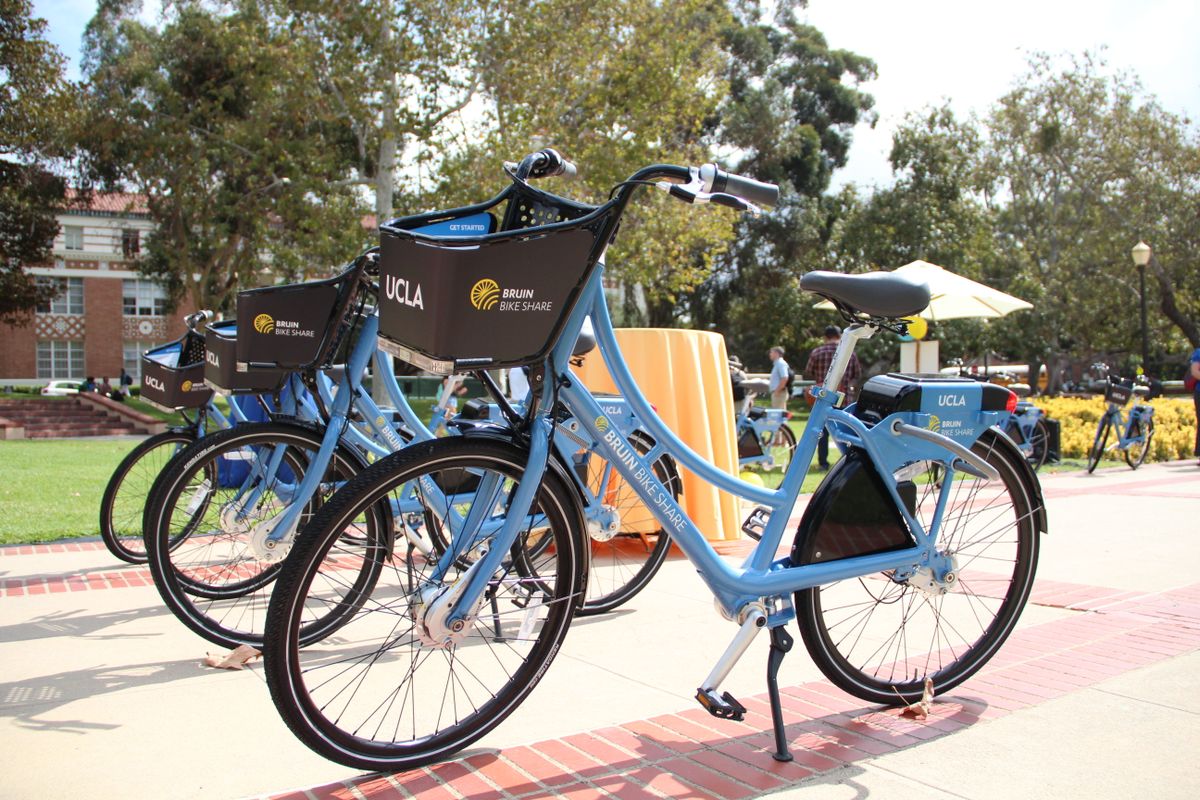Alex Wong is the Data Researcher for Ride SD.
The San Diego Association of Governments (SANDAG) is studying Airport Transit Connection concepts to link San Diego’s Downtown and its Airport with rail. This train will either be a Trolley or an Automated People Mover (APM). Both would improve transit to the airport, but the people mover is superior.
What is a People Mover?
People movers are neither moving walkways nor Tesla Tunnels. Instead, people movers refer to trains often used to shuttle passengers around airports.
However, San Diego’s APM would travel beyond the airport to connect to Trolley Lines at Santa Fe Depot and serve Civic Center (below) or the Convention Center.
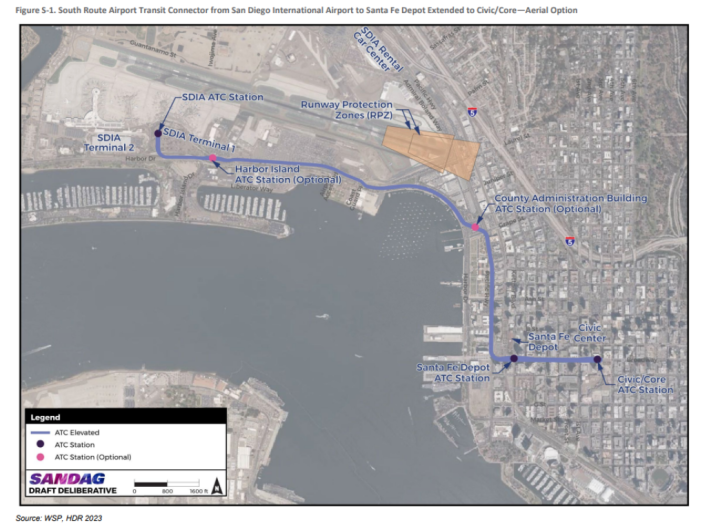
The APM would emulate Vancouver’s Skytrain, whose 22.6-mile Expo Line serves urban neighborhoods far from any airport. San Diego’s APM could similarly be extended past Downtown.
After all, Vancouver Skytrain (below, left) uses the same Bombardier Mark II trains as New York JFK Airport’s AirTrain People Mover (below, right).

People Mover Superpower 1: Frequency
Like Vancouver Skytrain, San Diego’s people mover could carry hundreds of people per train and run every two minutes, compared to every 7.5 minutes for the Airport Trolley. That is because while the Airport Trolley would require drivers, automated people movers are driverless. Therefore, going from running a four-car APM train every 4 minutes to running a two-car APM train every two minutes would decrease wait times while keeping capacity and required fleet and staff sizes constant. Doubling Trolley frequencies, however, would double the amount of hours paid to Trolley drivers.
Furthermore, while Trolley trains use absolute, fixed-block signalling, Vancouver Skytrain’s Automatic Train Control uses moving-block signalling. This enables Skytrain’s vehicles travelling at full speed to safely run closer together than Trolley trains can. These superior frequencies have boosted Vancouver Skytrain’s per-mile ridership to quadruple that of the Trolley’s and generated massive transit-oriented developments (TOD) well outside Downtown.
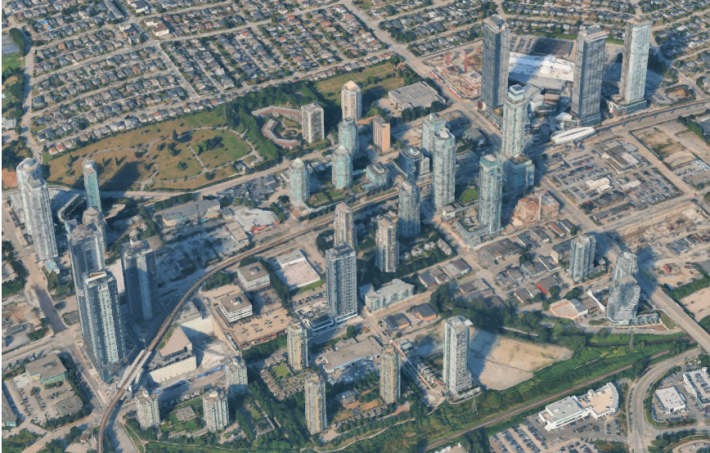
A forest of skyscrapers, many over fifty stories tall, surrounds Brentwood Station (above). One development, the Amazing Brentwood, will add 6,000 homes on only 28 acres. In comparison, San Diego’s largest TOD, SDSU Mission Valley, will have only 4,600 units on 46 acres.
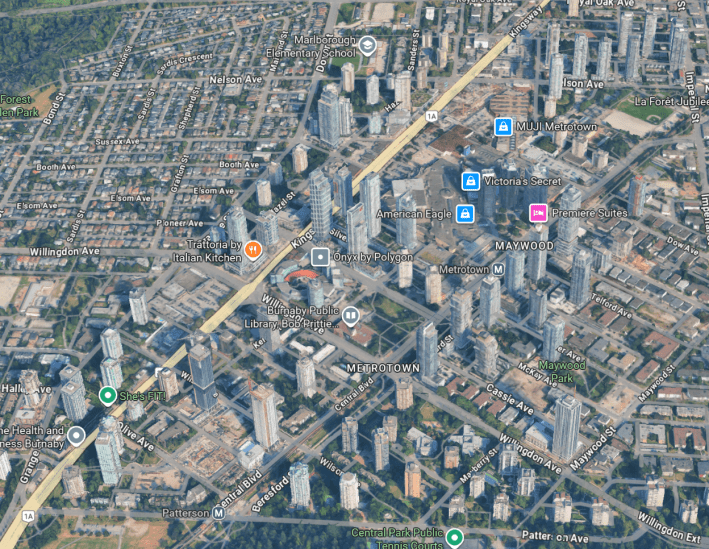
Near Metrotown station (above), developers are proposing a 72-story tower with only 279 parking spaces for its 469 dwellings, or 0.6 parking spaces per unit. This indicates developers are confident that Skytrain’s peak-hour trains running every two minutes will strongly entice people to take the train rather than drive.
By contrast, San Diego Riverwalk’s Phase One will have 1.5 parking spaces per unit, despite bordering a Green Line Trolley stop. While San Diego eliminated parking requirements for transit-adjacent residential, developers still build excessive parking because transit lines run only every 7.5-15 min at best, not frequent enough to be attractive alternatives to driving. Thus, if the airport line operated APM trains every 2-3 minutes, rather than Trolley trains every 7.5, it would spur denser TODs with less parking.
People Mover Superpower 2: Maximizing Mid-Coast and Green Line Capacity
The APM’s advantages extend beyond ultra-frequent airport line service. Under the APM concept, the Mid-Coast and Green Lines could each run twelve trains per hour. That is fifty percent more capacity than the eight train per hour limit they would have under the Airport Trolley scenario.
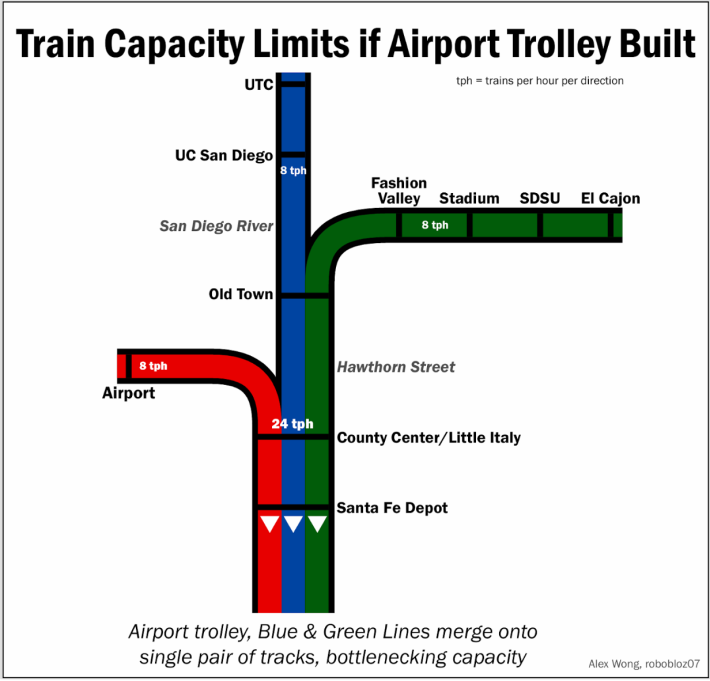
As the above diagram shows, the Airport Trolley concept will create a bottleneck by merging onto and sharing existing tracks with Blue and Green Lines between Hawthorn Street and Santa Fe Depot. This corridor’s maximum capacity is 24 trains per hour, per direction. Dividing this capacity between the Blue, Green, and Airport Trolleys limits each to eight trains per hour per direction, or 7.5-minute frequencies.
Unfortunately, 7.5 minute Mid-Coast frequency will provide inadequate capacity, given University City’s recently-enacted plan to add up to 29,000 new homes and 72,000 new jobs. After all, Mid-Coast ridership has already surged so rapidly that were it not for budget shortfalls, Mid-Coast frequencies would have doubled to 7.5 minutes in June 2025. Green Line megaprojects including Riverwalk and SDSU Mission Valley will likewise demand better than 7.5-minute frequencies.
Fortunately, unlike the Airport Trolley, the people mover would run on its own tracks and not share tracks with the Trolley.
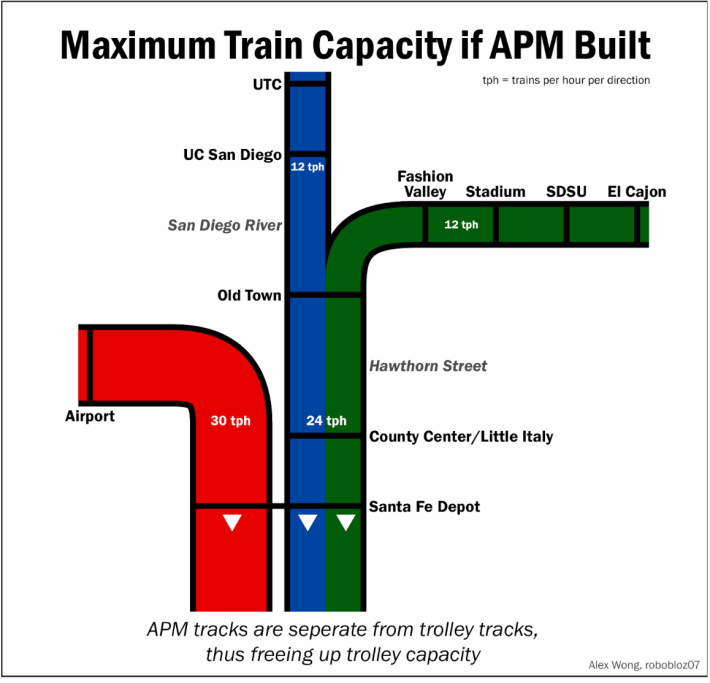
Therefore, if the people mover is built instead (above diagram), the Blue and Green Lines will have the 24 train per hour capacity all to themselves, allowing each to run twelve trains per hour per direction. Consequently, Trolleys would run every five minutes through University City and Mission Valley each.
People Mover as Urban Rail: A Global Success
Vancouver is not alone in running people movers on urban rail networks. Copenhagen built its entire 26.9-mile metro (below, left) using the same technology used on a Saudi Arabian university’s APM (below, right).

France’s Lille Metro (below, left) boasts 66-second frequencies using the same APM technology seen at Paris’ airports (below, right).
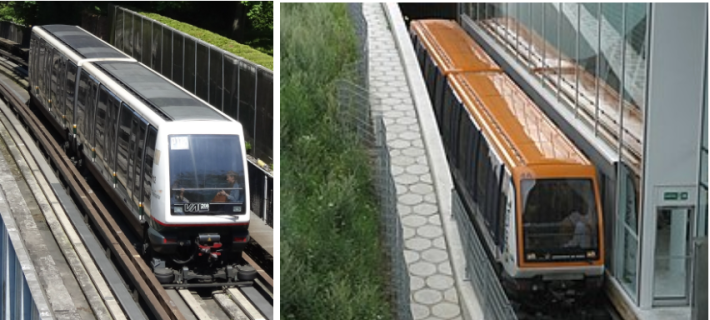
Both systems carry over twice as many people on under half as many track-miles as the Trolley in metropolitan areas less populous than San Diego County. Tokyo, Seoul, Singapore, and Toulouse also use APM technology on multiple urban rail lines. It’s time for San Diego to emulate these transit overachievers and build the APM.
